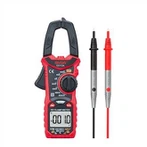Summary of five major issues that must be clear when purchasing a microscope
Question 1: What is the sample you want to observe before purchasing?
Because microscopes are classified according to their functions, there are generally polarizing microscopes, metallographic microscopes, stereo microscopes, biological microscopes, and fluorescence microscopes. Different functional microscopes are used differently. For example, polarizing microscopes are mainly used in geological ore research, clinical analysis, and observation of crystal inclusions, nerve fibers, animal muscles, plant fibers, etc. in teeth, bones, hair, and living cells. Structural details, analysis of the denaturation process. Metallographic microscopes are mainly used in the observation, identification and analysis of internal structures of various opaque materials such as metals. It is suitable for factories, mines, enterprises, institutions of higher learning and scientific research departments. Biological microscopes are mainly suitable for medical diagnosis, testing, teaching, and research in the medical and health fields, schools, and scientific research units. Therefore, before purchasing, you should figure out what the sample you want to observe is, so that the merchant can recommend you a suitable microscope.
Question 2: How much is the budget?
Because microscopes can be divided into domestic and imported ones, under the condition of the same function, imported microscopes are generally more expensive than domestic ones at present. If the budget is not high, domestic microscopes can also be considered.
Question 3. Do I need a digital imaging device?
Because the digital microscope has become a big selling point in the microscope industry now, it can realize synchronous preview in the computer, and can save the microscopic pictures in the computer, and can modify and edit these microscopic pictures. It will help a lot. Under normal circumstances, we still recommend that you choose the part of digital imaging device.
Question 4. What kind of effect do you want to achieve? For example, how many times to magnify.
Many companies now use microscopes in product quality testing, but microscope sales staff do not necessarily understand customers' products. Therefore, buyers can put forward their own requirements with suppliers, such as how many times to zoom in, can see the cracks on the surface of the product, or need to see the internal structure of the product, etc., that is, what effect needs to be achieved.
Question 5. What kind of after-sales service do you want?
The microscope industry is very particular about technical services, pre-sales and after-sales services must be in place, otherwise, it will be a very serious problem for microscope buyers. There are also related service terms such as delivery date, payment method, and installation or not are all issues worth explaining.






